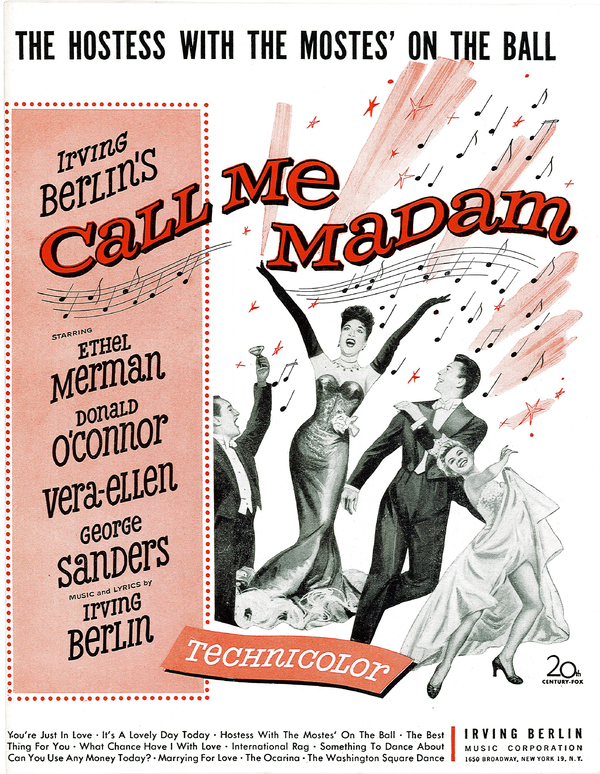Photo Flash: Celebrate the 70th Anniversary of the Opening of Irving Berlin's CALL ME MADAM on Broadway
Call Me Madam starred Ethel Merman, Russell Nype and more!
October 12, 1950. War was raging in Korea. The US Army had advanced north of the 38th parallel. Harry S. Truman was flying to Wake Island in the Pacific for the first-ever meeting with General Douglas MacArthur. Back home, rainfall was dampening New York's Columbus Day parade. Americans were listening to "Goodnight, Irene" and Bing and Gary Crosby's interpretation of a 1914 song by Irving Berlin, "Play a Simple Melody." And Berlin's new musical, Call Me Madam, was opening at New York's Imperial Theater with an advance of over one million dollars, by far the largest in Broadway history.
See photos from the original Broadway production of Call Me Madam below!
Call Me Madam was the summer-of-1949 brainchild of writers Howard Lindsay and Russel Crouse, whose Pulitzer Prize-winning play about a presidential election, State of the Union, was a triumph of the 1945-46 theatrical season. It was President Truman's appointment of noted party-giver Perle Mesta as Ambassador of Luxembourg that gave them the idea for Madam. Ethel Merman was a natural choice for the starring role, having been the leading lady of Lindsay & Crouse's first Broadway collaboration, Anything Goes (1934), and Berlin's most recent hit Annie Get Your Gun (1946). Leland Hayward, who presented State of the Union, Mr, Roberts and South Pacific, was the producer. George Abbott directed. Jerome Robbins staged the musical numbers.
While Call Me Madam was not really in big trouble during its mid-September 1950 New Haven break-in, it needed work and received what Variety's Hobe Morrison, an ardent cheerleader, described as "a heroic job of tryout doctoring." One important change occurred when the 26-year-old juvenile lead, Russell Nype, scored a sensational success singing "It's a Lovely Day Today." Merman, noting the cheers for Nype, whose crew cut made him look as if he'd just stepped off a college campus, said to Berlin, "I want a duet with the kid!" She got it-the show-stopping double song "You're Just in Love" was fashioned in a hotel room in less than two days. A month later Brooks Atkinson wrote in The New York Times, "When Miss Merman and Mr. Nype sing 'You're Just in Love,' which is Mr. Berlin's top achievement for the evening, Call Me Madam throws a little stardust around the theatre and sets the audience roaring." Both Merman and Nype went on to win Tony Awards for their performances.
Another change occurred a few days later in Boston when Robbins told Berlin that the second act needed "something to dance about." Berlin took Robbins at his word and promptly gave him a song with that very title. Years later Berlin told me, "One of the many reasons I love Jerome Robbins is that he always seems to know what to fix and how to fix it, but just as important he knows what to leave alone."
RCA was Madam's sole investor, putting up the entire $225,000 plus $30,000 needed for union bonds in order to secure all radio, television and cast album rights. The top ticket price, $7.20, was the highest on Broadway at that time
Call Me Madam received generally splendid reviews and notched up 644 performances. A national tour followed featuring Elaine Stritch and Kent Smith. Two London productions were mounted, one with an American, Billie Worth, and another with England's own Dora Bryan. 20th Century Fox released the film version starring Ethel Merman, George Sanders, Donald O'Connor and Vera-Ellen in 1953.
In 1995, Tyne Daly lead a glorious concert revival at New York City Center's Encores! series, leading to a cast recording from DRG Records, and sparkling numerous revivals, including a Papermill Playhouse (Millburn, N.J) production in 1996 starring Leslie Uggams.

Videos




.jpg)
.jpg)
.jpg)
.jpg)